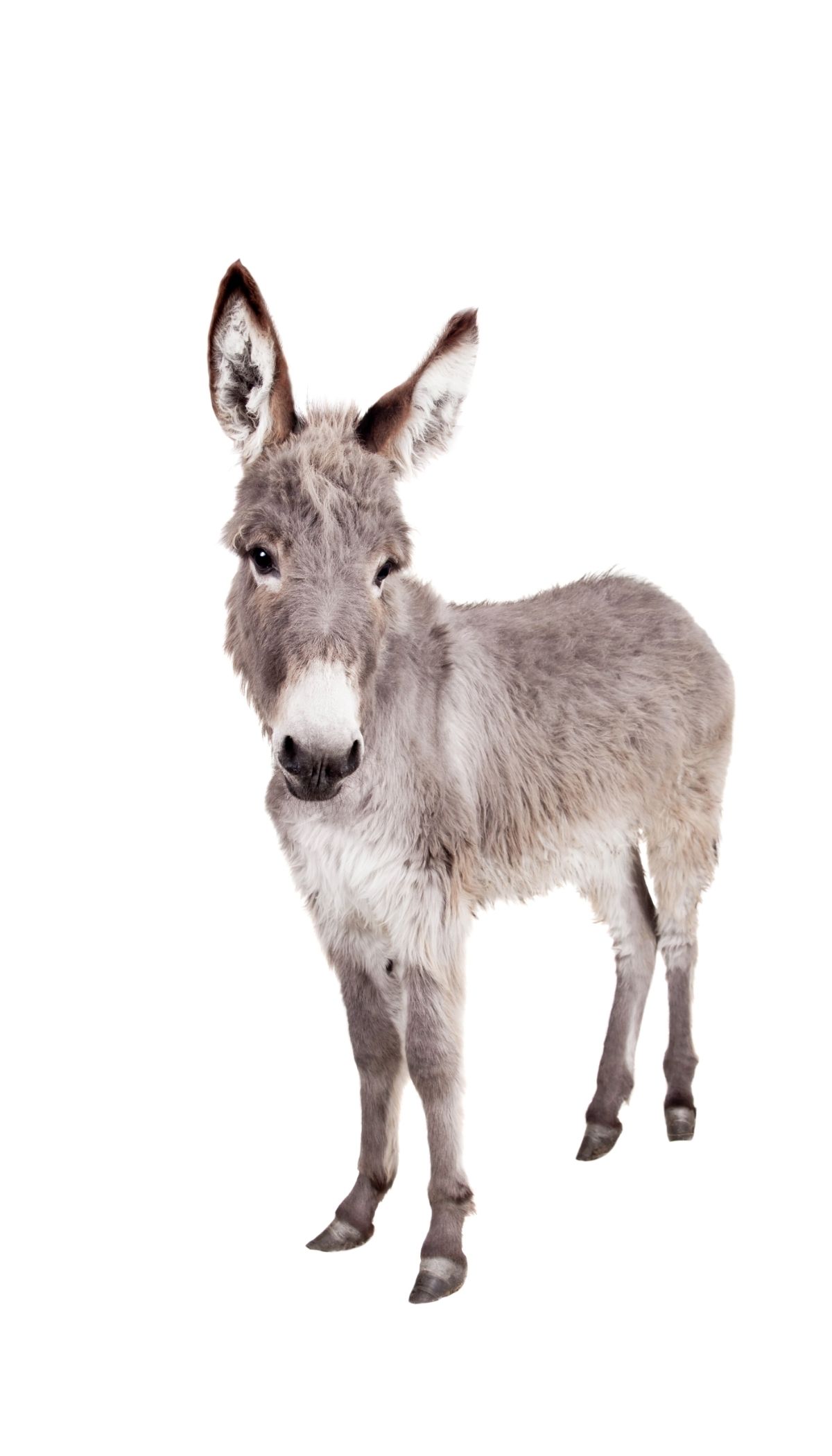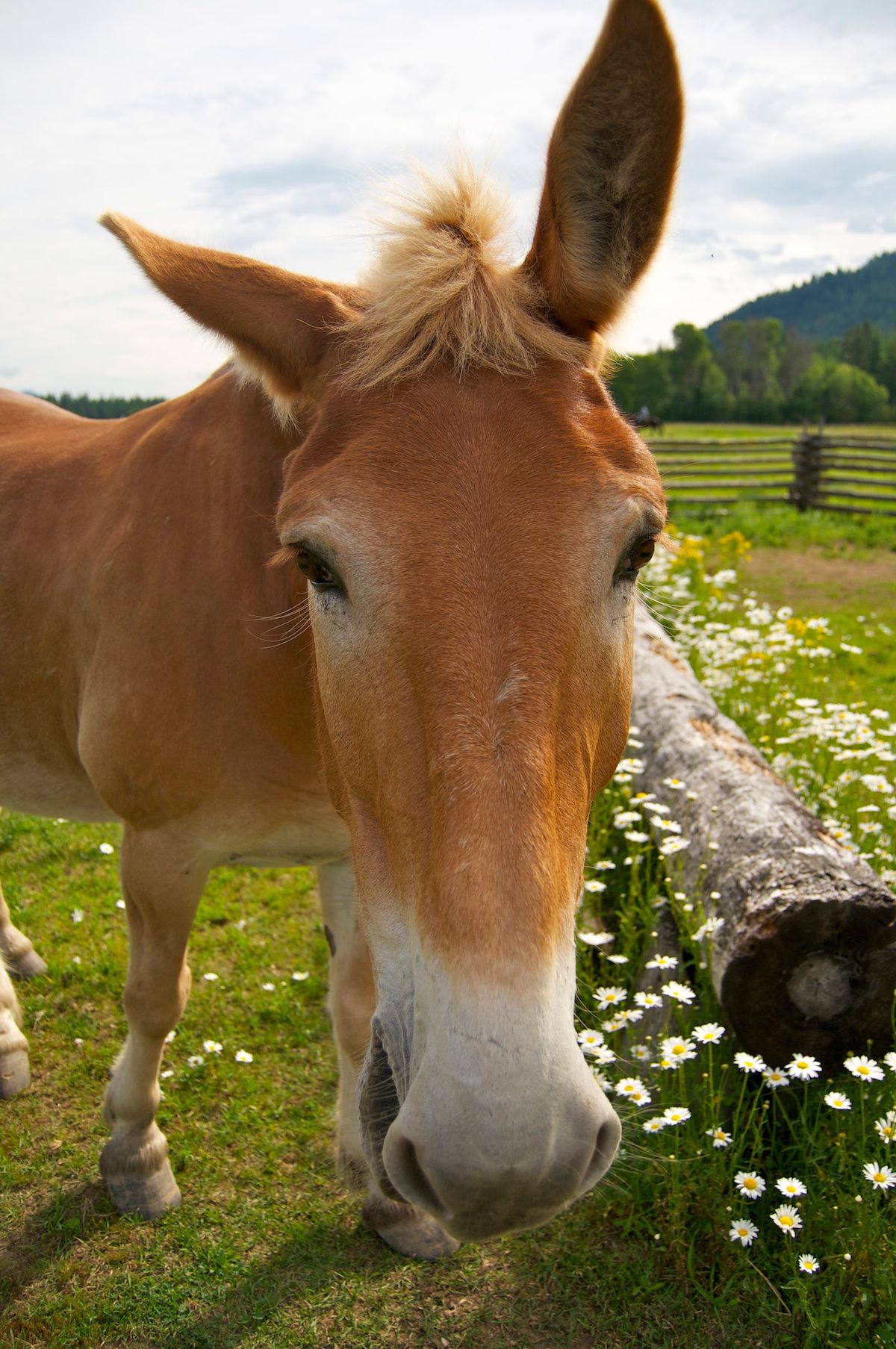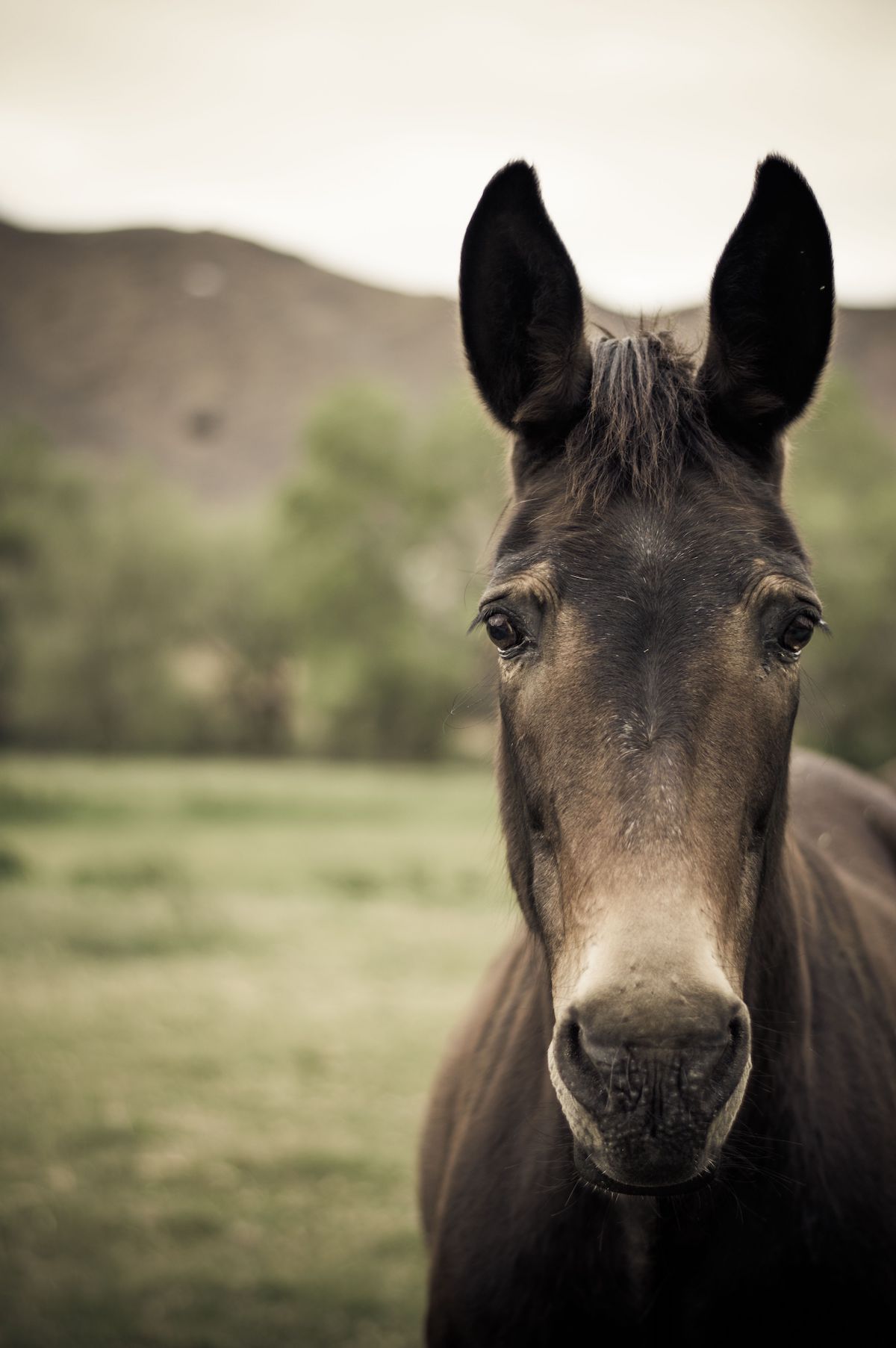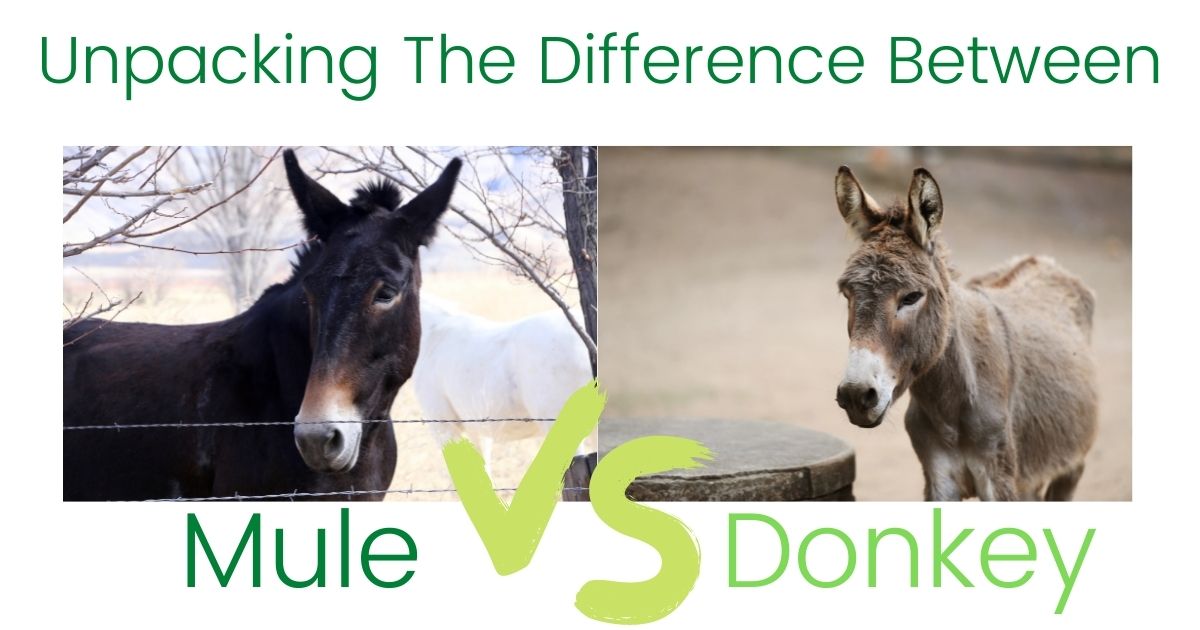What is a Mule?
Mule vs. Donkey is always a subject of contention with many people- they cannot tell the difference between a donkey and a mule. This article will look at the difference between the two animals. First, what is a mule? A mule is the offspring of a male donkey (jack) and a female horse (mare).
Mules inherit desirable qualities from both parent animals, with horses lending strength to their frame while donkeys provide stamina for long journeys.
Can Mules Reproduce?
A mule is a hybrid of a horse and a donkey. Mules only have 63 chromosomes, meaning they cannot produce haploid cells needed for reproduction; however, males can still mate with females though the emission isn’t fertile.
Castration is better in controlling the male mules from mating. However, there are no known cases where male mules have produced offspring themselves. It could either be because this animal has too few gametes due to their mixed genetics (donkey and horse mix).
Mule Vs. Donkey Comparison Chart
| Description | Donkey | Mule |
| Kingdom | Animalia | Animalia |
| Phylum | Chordata | Chordata |
| Diet | Herbivorous | Herbivorous |
| Class | Mammalia | Mammalia |
| Order | Perissodactyla | Perissodactyla |
| Males called | Jack | Jack or John |
| Family | Equidae | Equidae |
| Females called | Jenny | Molly |
| Manes | Short and upright | Short and upright |
| Built | Heavy | Heavy, tall, larger than donkeys |
| Fertility | Can reproduce | Cannot reproduce (sterile) |
| Life span | 30-50 years | 30-40 years |
| Natural color | Black, grey to Sable and white | Black, grey to sable, and white |
What are the Differences Between a Donkey and a Mule?
Donkeys and mules are both parts of the same Equidae family, so they all share a lot in common. They can be difficult to distinguish due to their similar appearances; however, these animals have some key differences. So, what’s the difference between a donkey and a mule?
The donkey and mule are both animals that can be used for light draught work, riding, or even as pets. They’re similar in more than just appearance. We’ll go deeper to see where these two related creatures differ from each other now.
Donkey
- The Donkey is a unique animal because it can be male or female. On average, it weighs between 400 and 1,100 pounds (181 and 499 kilograms) with an expected lifespan of around 25-30 years; they will require about one hour (or more) of exercise each day, depending on their size and breed type. However, don’t let its appearance fool you: don’t let the name “donkey” put you off! The intelligence level in these animals makes them easy to train.
- However, they are stubborn companions who resist commands but get used to them after constant rewards/punishments.
- Donkeys have a coat coloration pattern of grey, brown, or black with light-faced roaning and dorsal stripes on them to make it easy for you to identify what type they may look like!
- Donkeys have long ears with a thick dark base and taper off slightly at the tip, giving them an elegant appearance when seen from either side of their head or back-viewing angle!

Mule
- The mule is a hybrid between the horse and donkey. It has an athletic frame with long legs, which help it reach high places easily for grazing or water access in dry areas where there’s no vegetation cover. The average height for an adult male is between 46-70 inches (1.2-1.8 meters). An adult male weighs between 600-1500 pounds (272-680 kilograms) when it comes to weight.
- One exciting thing about mules is that they are lively creatures, but they get tired out quickly due to their heavy build, so exercising them should be done around two to three hours per day at most! They’re friendly enough that even children can handle one without issue, provided you teach your child how to ride correctly (training required).
- Mules require moderate clean-up accordingly since they sometimes leave behind manure when grazed close by. So, how long do mules live? Mules live up to around 35-40 years. They are also brilliant animals.
- A mule is a double-coated horse. The coat colors can be brown (sorrel), bay, black, or grey. There’s considerable variety, just like in horses with other common colorations: white roans, blue/red palomino, dun, and buckskin.
- They usually have longer ears than horses but are not quite as tall or heavy-eared compared to donkeys. The shape of a mule’s ear varies depending on its parent species.

Overview of the Donkey
Donkeys are known to be stubborn, but they’re pretty friendly creatures. Moreover, donkeys can withstand a lot and still manage to stay cheerful! And these hardy animals also have excellent memories so much that one donkey can recognize other donkeys or places it has not seen in 25 years.
Origin
Donkeys have been working alongside humans since time immemorial. We first domesticated them around the same time that we did horses and for similar reasons- though donkeys weren’t for riding.
Donkeys were used as workers in Africa, specifically Egypt. In Egyptian, the word donkey initially means “horse.” They were put in front of carts or hauled by human drivers across this ancient world’s landscape.
Size
There is a lot to know about donkeys today. The three different sizes include, but are not limited to miniature–36 inches (1 meter), standard size/horse height at 56-60 inches, (1.4-1.5 meters) and the largest species of their kind, which measure up between 14–14.5 hands tall; megalonyx dwarfs can stand as short as 36 inches (1 meter)!
Donkeys are more miniature than your typical horse or mule, but that doesn’t mean they don’t have some big muscles. The average weight for a standard donkey is between 400-600 pounds (181-272 kilograms), with extreme sizes reaching up to 950+ pounds (430 kilograms)!
Feeding
The donkeys’ low maintenance requirements make them an efficient choice for work. This is useful in parts of the world where feed costs are high and scarce – which means these animals could be more prevalent than you think, with over 50 million worldwide being used as farmhands.
Suitable for
Donkeys are a great animal to have around. They’re one of the most commonly used animals for work. A great advantage is that they require low feed requirements! Not only that but donkeys can be easily maintained with affordable prices for their care, making them perfect as companion livestock or even as pets too!.
Overview of the Mule
Though donkeys look vaguely like horses, mules are much closer to the appearance of a horse and can still be mistaken for one. Mules are better suited as pack animals or riding mounts due to their strength and speed; they do not require special nutrition. In ancient Egypt, royalty rode these loyal creatures into battle.
Origin
Mules are created when you cross a horse and a donkey. Specifically, they’re made by breeding an adult male donkey (jack) with a female horse (mare). The results are traits from both animals; combined physical strength from their equine parents and athleticism like in horses.
Size
Horses are always larger than donkeys, so it makes sense that mules would be significant as well. Mules come in different sizes and shapes, but on average, a mule will measure about 50-70 inches (1.3-1.8 meters) tall at 12.5 hands or taller. With weights reaching 1,500 pounds (680 kilograms), these hefty quadrupedal beings can outweigh many horses!
Sterility
A mule is usually a healthy creature, but there’s always the problem of crossing two different species. As a result of crossbreeding, 99% are sterile and can’t reproduce with each other or another animal on their own. So the only way to get mule offspring is through horses breeding with donkeys.
Suitable for
Mules are versatile and impressive animals. They can be used in almost every situation that horses or donkeys would, but they have an advantage over their equine counterparts because mules can pull carts as well! So if you’re looking for something more than just riding on two feet, then this is your go-to mode of transportation.
Interesting Facts About Mules
- A mule is the offspring of a male donkey and female horse, and the mule typically inherits its father’s elongated ears and traits from both parents.
- A hinny is the offspring of a male horse and a female donkey. Mules and hinnies are almost always sterile. They’re not able to reproduce on their own!
- Mules come in a range of sizes, from tiny to draft. This means that they can be helpful in many things and excel at what you need them to!
- Draft mules are the result of horse mares crossed with Mammoth Jack donkeys. Drafts have solid and thick soles to help them carry heavy burdens up steep terrain and over long distances quickly without tiring.
- Mules are the perfect pack animal. They can carry heavy burdens over long distances, and they were essential to American history during the Western Expansion period.
- You might think mules are always stubborn, but new research proves they can be pretty intelligent too. So the “stubborn” stereotype may not apply in many cases after all!
- George Washington was a critical man who made America great and helped establish the mule as one of America’s most popular breeds.
- The first clone of an equine was a mule born in 2003, and her name is Idaho Gem. The cloning project between the University Of Idaho and Utah State has become famous across America for this remarkable achievement with worldwide recognition.
- The American Mule Racing Association exists “to promote the racing of mules at recognized distances in the sport.” The AMRA is dedicated to spreading awareness about this ancient, stubborn, but clever animal that excels because it shares qualities with horse and bike riders.
- Black Ruby, the champion racing mule, won over 50 international events before retiring in 2008 to become a broodmare for other runners.
- The Talking Mule, Chill Wills’ Francis, was a famous star in 1950s comedy films. His co-stars included Bing Crosby, Bob Hope, and Dorothy Lamour!
- The American Mule Museum is an organization dedicated to telling how mules have contributed to America. The museum has been fundraising and currently needs more funds to build a building that will house many historical items about mules.
- Mule Days is a festival that celebrates mules’ legacy, heritage, and talent. This event takes place each Memorial Day weekend in Bishop, California. Attendees can participate in different classes like western pleasure, riding, or cowboy dressage with their favorite animal! Other events run throughout this two-day celebration, such as hunter hack competitions for kids who want to learn how to ride; costume contests that feature some creative outfits.

Bottom Line
Mules are great for riding, working, and everything in between. Most donkeys aren’t suitable to ride. They make good companion animals or light draught animals with other pets. Mules can handle more work, thanks to their larger size.
Affordability becomes an issue for mules because they require expensive feedings compared to donkeys that cost less per day. Therefore, it would help if you looked at what you could afford before choosing either a mule or donkey.
